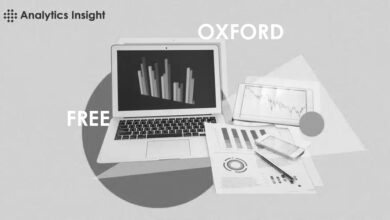21 Data Analysis Tools to Know

Data analysis tools give people and businesses the ability to analyze and derive insights from variables like clicks, searches, purchases and tweets. This is crucial because the immense amount of data swirling around these days is only as valuable as the information you can extract from it. As such, data analysis — the technique by which raw data is transformed into useful statistics, insights and even predictions — has become an incredibly important area in tech.
Data Analysis Tools to Know
- Airtable
- Qlik
- IBM Cognos
- Looker
- Microsoft Power BI
- Oracle Analytics Cloud
- R
- RapidMiner
- Splunk
- Tableau
Humans simply don’t have the time or resources to sift through massive amounts of data, so data analysts and other professionals rely on data analysis tools to simplify the process.
How to Choose a Data Analysis Tool
While all data analysis tools come with helpful features, you’ll want to choose one that fits the needs of your team or organization.
Consider the audience of your data analysis tool. If you’re selecting a tool for data scientists and data engineers, you can equip them with a more advanced data platform that offers users ways to manipulate their code. If you want a tool that’s accessible to different teams, go for a more basic product that handles complex tasks like data modeling and allows users to navigate the interface with easy one-click interaction.
How Are Data Analysis Tools Used?
- Informing company decisions with business intelligence.
- Revealing ways to make operations more efficient.
- Supporting narratives through data visualizations.
- Analyzing future trends for factors like customer churn and product success.
- Anticipating cyber attacks and taking proactive measures.
Another thing to think about is the purpose of your data analysis tool. If you want it to shed light on potential business outcomes, make sure your next tool has the ability to perform in-depth predictive analytics. Or perhaps being able to glean insights from data and present your findings is your top priority. In that case, choosing data analysis tools with data visualization features may be the best route for your team.
And don’t forget about cost. Make sure your next data analysis tool meets your department’s budget and can scale effectively to maximize your investment and reduce long-term expenses.
With these factors in mind, here are some popular data analysis tools on the market today.
Data Analysis Tools to Know
Starburst
Starburst’s data lake analytics platform has applications for industries such as financial services, retail, energy and manufacturing. It’s built to overcome data access challenges, providing customers with enterprise-grade connectivity for their on-premises and cloud data sources along with the ability to analyze large amounts of data for insights that can then be securely shared.
Airtable
As a cloud-based spreadsheet database, Airtable is designed to help users collect, organize, visualize and analyze their data in a collaborative way. Much like a Microsoft Excel or Google Sheets spreadsheet, an Airtable spreadsheet is organized into rows and columns. And the platform is no-code, meaning users can manage and analyze the data they’ve gathered without having to understand SQL, or structured query language.
Apache Spark
Apache Spark is an open-source analytics tool used for processing large-scale data. The software provides scalable and unified processing that is capable of executing data engineering, data science and machine learning tasks in Java, Python, R, Scala or SQL. Apache Spark was developed by the Apache Software Foundation, which also created tools like Apache Mahout, Apache Storm and more.
IBM Cognos
As the business intelligence component of IBM’s Watson, Cognos offers built-in artificial intelligence tools that analyze data and then explain insights in plain terms. It also has automated data preparation software that can clean and aggregate data sources, allowing for quick integration and analysis of data sources.
KNIME
Short for Konstanz Information Miner, KNIME is a free, open-source analytics platform that supports the integration, processing, visualization and reporting of data, allowing it to make interpretations and predictions. It also plugs in machine learning and data mining libraries with little to no programming requirements, making it especially useful to data scientists who want to integrate and process their data for machine learning and other statistical models but don’t have strong programming skills.
Looker
Looker is a cloud-based business intelligence and data analytics platform, featuring automatic data model generation that scans data schemas and then infers relationships between tables and their data sources. Data engineers can also modify the generated models thanks to a built-in code editor. Offering reports and visualizations that are clear and shareable, Looker is designed to be accessible for both data analysts and business teams.
Metabase
Metabase is yet another free and open-source analytics and business intelligence platform. But what sets it apart is its ability to allow users to ask questions, providing a more approachable way for less-than-techie users to analyze their data with simple filtering and aggregations. More technically advanced users can go straight to raw SQL for more complex analysis.
Microsoft Excel
Microsoft Excel is among the oldest analytics tools on the market today, but it is still widely used thanks to its versatility and simple design. Once data is filled into the rows and columns of an Excel spreadsheet, users can export and send their data, as well as analyze it. And because it has decades of development supporting it, the platform can support nearly any standard analytics workflow. There are a few limitations to Excel, though. It doesn’t have an automation feature, and it is not suitable for analyzing large data sets because it has a limit of about a million rows.
Microsoft Power BI
As Microsoft’s more technologically advanced data analytics tool, Power BI offers support for dozens of data sources and allows users to create and share reports, displays and dashboards. It is composed of several individual products, including Power BI Desktop, Power BI Pro and Power BI Mobile — all of which can be integrated with each other and other Microsoft products. Plus, Power BI lets users create and implement automatic models by applying machine learning with Azure Machine Learning.
Mode
Mode is focused on providing data scientists with an easy, iterative environment to work in. It offers everything from an interactive SQL editor and notebook for analysis, to visualization and collaboration tools for the less technically inclined users. Mode also has a Helix data engine that streams and stores data from external databases, allowing for swift and interactive analysis.
Oracle Analytics Cloud
The Oracle Analytics Cloud is a suite of cloud-based business intelligence and data analytics tools, focused on helping big companies transform their legacy systems into modern cloud platforms. It offers a wide variety of analytical features, from basic visualizations to machine learning algorithms.
Qlik
Qlik is an analytics and data integration tool that includes visualization features like Qlik Sense, which allows users to create interactive dashboards, as well as share maps, graphs and other visual elements with their teams. The platform also uses artificial intelligence to automatically generate analyses and insights, and natural language processing to better understand user intent. People who prefer conversation to visualization can chat with Qlik’s AI-enabled Insight Bot.
R
R is an interpreted programming language designed for use in statistical computing and graphics. Featuring numerous graphical tools and more than 15,000 open-source packages (including many for loading, manipulating, modeling and visualizing data), R is considered to be one of the most comprehensive statistical programming languages available — capable of handling everything from data manipulation to statistical analysis. That said, R requires quite a bit of programming skill, so it is mostly used by professionals working in data science, such as statisticians and data miners.
RapidMiner
Developed in partnership with software company Altair, RapidMiner is a predictive analytics platform that does everything from fraud detection to churn prevention. Nearly all of this can be done through RapidMiners’ simple interface, allowing analysts to prepare data and run models on their own. However, the platform can also be expanded using R, Python and other third-party plug-ins on the company’s marketplace.
Redash
Redash is used for querying data sources and making visualizations. Its code is open-source, and it has a query editor that provides a simple interface for writing queries, exploring schemas and managing integrations. Then, query results are cached within Redash, and users can schedule updates to run automatically.
SAS Advanced Analytics
SAS Advanced Analytics is a module of the larger SAS data analytics platform, including SAS Business Intelligence and SAS Forecasting. The advanced analytics module is focused specifically on providing predictive analytics with the help of AI technology. It also offers text mining and data visualization tools to help companies take full advantage of their data, as well as built-in security features to help protect sensitive data.
Sisense
Sisense is a data analytics tool that is focused mainly on business intelligence, allowing data engineers, analysts and developers to connect and prepare data securely, as well as manage, embed and explore insights across various devices. The platform is kitted out with a collection of drag-and-drop tools and interactive dashboards for a more collaborative and easy user experience. And it is all built on an API-driven, cloud-native architecture to allow for flexible and scalable deployment.
Stitch
Developed by big data company Talend, Stitch allows companies to quickly load data from hundreds of sources into a data warehouse, where it is then structured and ready for analysis. Talend also has another tool called Data Fabric, which combines data integration with data governance and integrity, as well as offers application and API integration.
Splunk
Splunk focuses mainly on helping the IT, cybersecurity, Internet of Things and data analytics sectors. The platform features a comprehensive data hub that is able to manage data insights, security and full-stack scalability. For navigating big data, Splunk can bring together hundreds of terabytes of data across a variety of servers into one interface, allowing businesses to visualize and interpret their data by seeing it in context.
Tableau
Owned by software giant Salesforce, Tableau is designed so that everyone at a given company can see essential patterns and correlations in institutional data, without having to write a single line of code. Rather than technical data mining, Tableau relies on a person’s innate ability to spot patterns, so its visualizations range from color-coded maps to live graphics that update in real time. Much of Tableau runs on top of its core query language, VizQL, which translates drag-and-drop components into back-end queries — thus minimizing the need for the end user to optimize its performance.
ThoughtSpot
ThoughtSpot allows people to explore and glean important information from their company’s data, regardless of their tech abilities. SpotIQ, its AI-powered system, finds insights to help users determine patterns and trends in the data. It allows them to automatically link tables from different data sources in order to break down data silos, which is beneficial for many industries. In marketing, everyone from marketing managers to customer care representatives can pull the data they need to understand customer usage, which allows for better marketing decisions and an improved customer experience.



